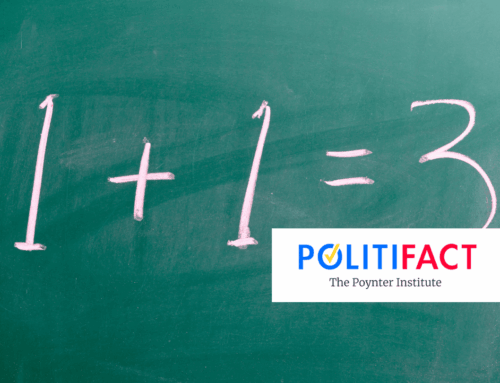After months of wrangling, the Fiscal Year 2024 discretionary budget for the federal government was enacted on March 23, 2024. The process had its share of theatrics, bringing the federal government to the brink of a shutdown not once, not twice, but four times between September 30, 2023, and March 23, 2024, costing one Speaker his job. With the process completed and Congress moving into the Fiscal Year 2025 budget process, it’s time for budget watchdogs like TCS to dig into what was included in the final version of the bill.
Among trillions of dollars of other spending, a relatively small amount of spending sticks out like a sore thumb. Included in the larger spending bills are 8,100 funding requests worth nearly $15.8 billion. These requests, currently known as “Community Project Funding,” are more popularly known as earmarks. Earmarks allow representatives and senators to direct a specific amount of funding to a specific project. Both the House and Senate have rules governing the earmark process. Generally, these requests can be made to purchase equipment, fund construction of buildings, or finance the operation of a myriad of causes, from libraries, YMCAs, and community development organizations to police departments, military installations, and Army Corps of Engineers projects. Proponents of the earmark system argue that it ensures underserved programs receive federal funding that they might otherwise get overlooked. That doesn’t sound like a problem, does it?
Let’s delve deeper into why earmarks are problematic. Earmarks allow lawmakers to direct funds to specific projects or entities, often without going through the rigorous competitive or formula-driven processes that are typically in place to ensure fair distribution. Instead of funding decisions being based on clear, consistent, and fact-based criteria, earmarks can bypass these standards, potentially leading to inefficient use of taxpayer money and favoritism, cronyism, or even fraud.
Many Members of Congress and their staff have long-derided earmarks for their outsized impact on their schedules. Because funding is limited and projects need to be vetted, a relatively large amount of time is spent scrutinizing where a relatively small amount of money is spent. $15 billion is a significant amount, but in a federal budget that spent a little more than $6 trillion in FY2024, the process of fielding requests, vetting them, and ultimately negotiating the final list of earmarks in each appropriations bill employs significant staff time for individual member offices and the appropriations committees. This reduces the number of resources lawmakers and their staff can use to address more pressing matters, taking time and resources away from where they might be spent more efficiently.
The issue with earmarks goes beyond mere allocation inefficiencies. It raises questions of fairness and equity in federal funding. By allowing lawmakers to earmark funds, there’s a risk of creating a system where political clout trumps project merit. This can erode public trust in government spending and breed cynicism among taxpayers who expect their hard-earned dollars to be allocated based on genuine need and merit.
Take, for example, the amount of money allocated to the various states in this year’s process. Unsurprisingly, California received the most money, as one might expect for the most populous state. California was followed by similarly well-populated Florida, Texas, and New York. The fifth, however, was not Pennsylvania, the fifth most populous state, but rather Maine, the 42nd most populous state. Now, why might that be? Senator Susan Collins (R-ME) is the Vice Chair (read: Ranking Member) of the Senate Appropriations Committee. This is not to suggest conspiracy or political malfeasance on the part of Senator Collins, but more to underscore the political reality of how the earmarks process works. Because Senator Collins is in a position of power, both officially due to her committee seniority and unofficially due to her political maneuvering and willingness to work with both parties, she is able to have an outsized impact on the appropriations process for Maine. This inordinate power of appropriators is also seen in the fact that appropriators are able to secure more funds than non-appropriators, underscoring the political nature of the process. By our count, the members of the appropriations committee, both House and Senate, requested 3,477 of the 8,100 total earmarks, or roughly 43 percent. Further, the appropriators secured approximately $8.24 billion worth of earmarks, roughly 52 percent of all of the money allocated. For a group of members that make up only 17 percent of Congress, that is a very outsized impact. What is more interesting is the fact that not every appropriator sought earmarks, so the correct percentage of members requesting more than half of all earmarks is smaller than 17 percent, it is closer to 15.7 percent. For instance, Sen. John Hoeven (R-ND) is an appropriator yet requested no earmarks for North Dakota. In fact, not a single member of the North Dakota delegation requested funding, leaving North Dakota the only state not to receive an earmark.
The political nature of earmarks means that beneficiaries may be “good” projects or organizations, but there is no guarantee that they are funding the “best” or most pressing needs. One need not look too far into the history of earmarking to see funding allocated for highways that state DOTs did not want, engineering problems that create rather than solve issues, or even Bridges to Nowhere.
The system itself remains an issue. In addition to the process by which the funds are allocated, it remains difficult for outside observers, including TCS, to track where spending is allocated easily. To be sure, things have improved from where they were even 20 years ago. Despite these improvements, challenges remain in ensuring earmark transparency. Data quality and accessibility remain a major issue. Congress and its staff have access to higher-quality data and better data presentation than what is made publicly available. The decision to release data in lower quality is just that, a decision. Greater transparency is important, not just for accountability but also for facilitating informed decision-making and public discussion of spending priorities. As the US debt continues to grow at an unsustainable pace, these are the tough discussions policymakers and regular Americans need to have.
Ultimately, earmarks are a relatively small drop in the massive bucket of the US federal budget. However, the current process takes up an outsized proportion of lawmakers’ time, allocates spending in a potentially unfair way, and despite improvements, still leaves much to be desired in terms of transparency and accountability. Reforms have improved the earmarks process, but those reforms have further to go before the system is truly improved. Maintaining and fostering transparency in the federal budget process remains critical to foster trust and to ensuring taxpayer dollars are allocated effectively and responsibly.









